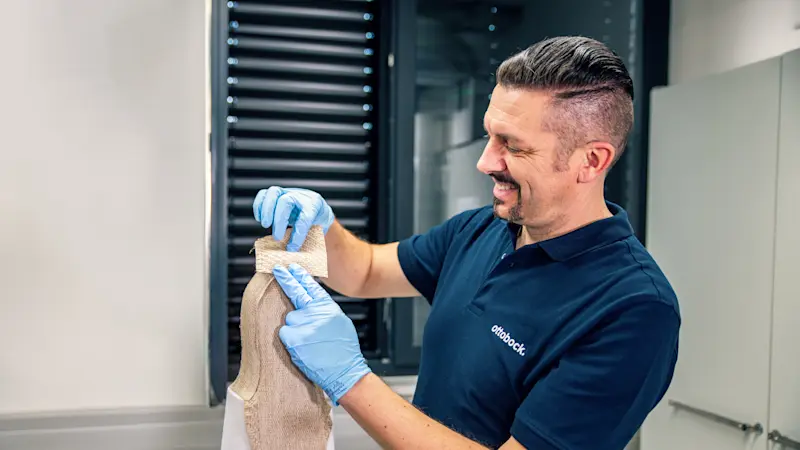GreenLine: sustainable alternatives for the orthopaedic workshop
Prosthetic sockets and orthoses made of renewable materials

Monday, 22 April 2024
Traditionally, medical technology devices are made of fossil materials. Meanwhile, more sustainable materials and their development are increasingly becoming the focus of the industry. One in three respondents of the “Sustainable Consumption” Consumer Insights Survey 2023 stated that the use of renewable or non-polluting raw materials is important to them (1). Up to now, however, O&P professionals have never had the opportunity to offer their patients such solutions. With its “GreenLine” product series, the medical technology company Ottobock is now offering alternatives made entirely or partially from renewable raw materials.
“As a value-driven company, we take responsibility for the quality and safety of our products. We want to provide O&P professionals and their patients with solutions that combine the need for more ecological materials with consistent functionality. With our GreenLine portfolio, we’re establishing a new generation of materials that is capable of just that,” explains Oliver Jakobi, CEO/CSO at Ottobock.
GreenLine: More occupational health and safety for O&P professionals
Manufacturing prosthetic sockets and orthoses requires numerous materials such as resins, fibres, thermoplastics and adhesives. GreenLine combines a variety of materials that are more environmentally friendly and less risky for O&P professionals during processing, such as the GreenLine hardening powder. With this new material, Ottobock is also responding to the desire for greater safety in the workplace.
Two further product innovations will follow shortly. The UCAST/WOODCAST orthosis bar system and flax fibre as a natural alternative to carbon and fibreglass will be presented at OTWorld in Leipzig (14 to 17 May 2024).
Sustainable product innovations at OTWorld
The UCAST orthotic splinting system is used for malpositions of the joints and fractures of the upper limbs. The device consists of just two components: the sustainable thermoplastic WOODCAST based on aspen wood and polymers, and a self-adhesive support that bonds to the thermoplastic when fitted to the patient. The orthotic system consists of biodegradable material and is free from microplastics. At the same time, the corresponding thermoplastic mixture WOODCAST is easy to shape, even in difficult areas such as the fingers. And it is twice as stable as plaster, similar to glass fibres. As a result, when used for medical devices, the combination represents a functional and ecological alternative to conventional solutions on the market.
Ottobock is also presenting its flax fibre reinforcement material at OTWorld. This 100 per cent renewable raw material is used to manufacture laminates for lower limb prosthetic sockets.
“In addition, we have a specially developed layup plan. It explains to the O&P professional step by step how the flax fibres are processed into a secure socket. This is needed because socket fabrication from flax fibre is not a standard part of their training,” explains Lars Hellmich, product manager at Ottobock. “The layup plan makes flax fibres a real alternative to carbon, as it is unique on the market so far. But what the technicians decide to use is ultimately up to them.”
Source
(1) Statista survey in Germany on the most important aspects of sustainability 2023, 03.01.2024
Images
All pictures can be used free of charge. Please use the copyright ©Ottobock.
Image GreenLine flax fibres
Image GreenLine WOODCAST
Image GreenLine UCAST
3 results out of 3

